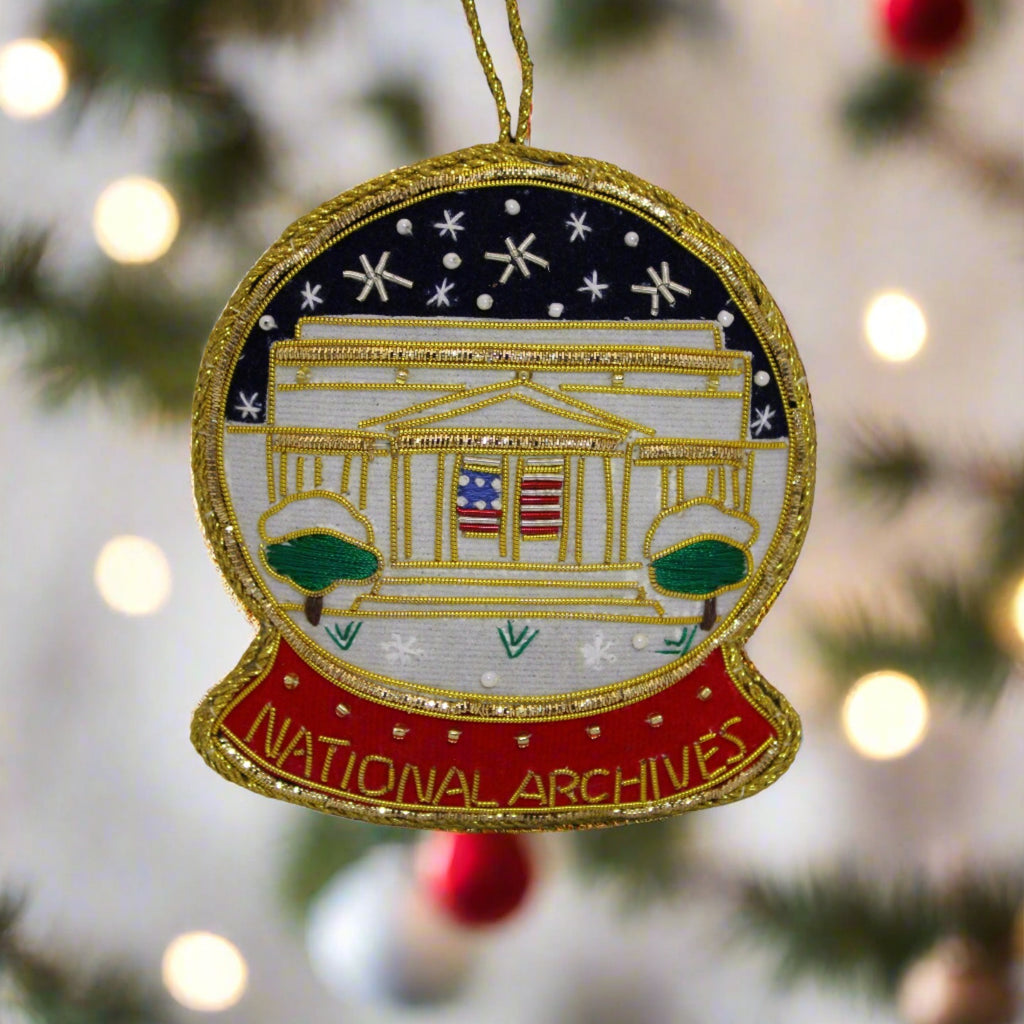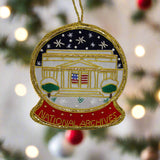


The National Archives in a Snow Globe Fabric Ornament
- National Archives Store Exclusive
- Handmade
- Approximately 6 inches
-
If you like snow globes and ornaments and you need help deciding which one to get, this might be your twofer deal. A rendition of the National Archives on a starry night with all handmade details. You're welcome!
-
Drafted by 33-year-old Thomas Jefferson between June 11 and June 28, 1776, the Declaration of Independence is the nation's most cherished symbol of liberty. It was adopted by the Continental Congress on July 4, 1776, and announced that the 13 American colonies, then at war with Great Britain, regarded themselves as independent states and no longer a part of the British Empire. Instead, they formed a union that would become a new nation: the United States of America.
The U.S. Constitution is the supreme law of the United States of America. The Constitution originally consisted of seven Articles. The first three Articles embody the doctrine of the separation of powers, whereby the federal government is divided into three branches: the legislature, consisting of the bicameral Congress; the executive, consisting of the President; and the judiciary, consisting of the Supreme Court and other federal courts.
On September 25, 1789, the First Congress of the United States proposed 12 amendments to the Constitution. Ten of the 12 were ratified by three-fourths of the state legislatures on December 15, 1791. The ratified Articles constitute the first 10 amendments of the Constitution, or the U.S. Bill of Rights. In 1992, 203 years after it was proposed, Article 2 was ratified as the 27th Amendment to the Constitution. Article 1 was never ratified.
President Abraham Lincoln issued the Emancipation Proclamation on January 1, 1863, during the American Civil War, formally proclaiming the freedom of all slaves held in areas still in revolt. The Proclamation invited black men to join the Union Army and Navy, resulting in the enlistment of approximately 200,000 freed slaves and free black people before the war's end.
The original Charters of Freedom documents are on permanent exhibit in the Rotunda at the National Archives Museum.
The original handwritten Emancipation Proclamation is preserved, protected and held in trust by the National Archives.